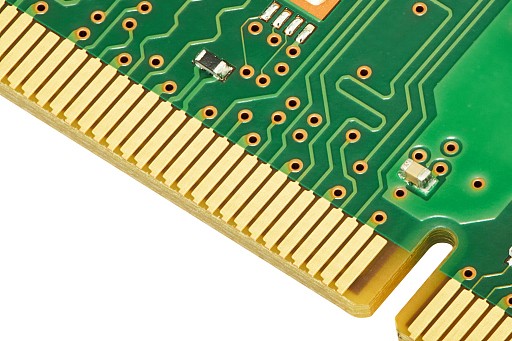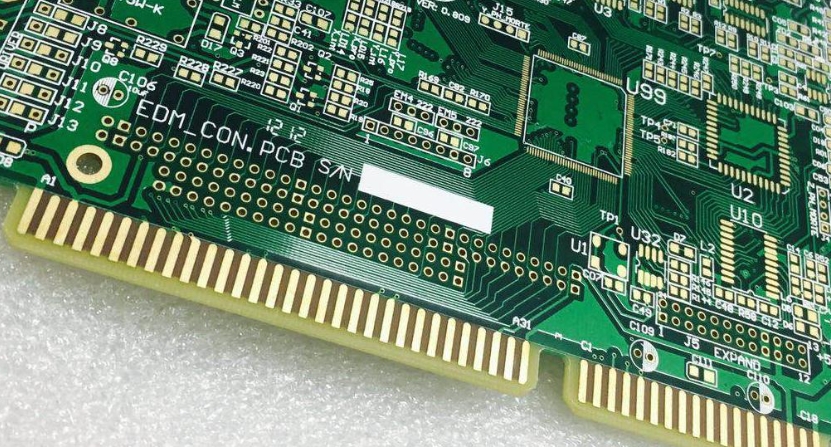How Thick is Gold Finger PCB Plating and its Cost?
Gold Finger PCBs are critical components in various electronic applications, particularly devices requiring reliable edge connections. The gold plating on these PCBs’ edges ensures excellent conductivity, corrosion resistance, and long-term durability. However, the optimal thickness of the gold plating varies based on application needs, such as insertion cycles, durability, and cost. This guide explores the ideal gold plating thickness for Gold Finger PCB, its implications on cost, and how to choose the best option for your project.
The role of gold fingers on PCB
Gold fingers are the gold-plated copper pads or traces located along the edges of a PCB. These fingers are essential for creating a secure electrical connection when the PCB is inserted into a connector. Their primary purpose is to ensure reliable and durable connections, even with repeated insertions and removals. Gold plating is the material of choice because of its excellent conductivity and resistance to corrosion.
The gold plating enhances several essential characteristics of the PCB, including its ability to resist oxidation, smooth insertion into mating connectors, and protection against wear and tear from repeated use. These benefits make gold fingers ideal for applications where durability and longevity are key.

Gold finger PCB thickness range and application
The gold plating thickness on Gold Finger PCBs typically ranges from 0.05 μm to 5 μm. The appropriate thickness depends on the application’s specific needs, as thicker plating generally ensures excellent durability and performance. Here’s a look at typical thickness ranges:
- 0.05 – 0.15 μm: Suitable for consumer electronics, where the device undergoes fewer insertions and the lifespan requirements are moderate.
- 0.15 – 0.3 μm: Used in industrial electronics that need moderate durability but are not subject to frequent insertions.
- 0.3 – 1 μm: Common for military, aerospace, or high-reliability applications requiring extended durability and performance.
- 1 – 5 μm: Ideal for high-durability connectors in harsh environments or systems that demand thousands of insertions without failure.
Choosing the right thickness ensures that your Gold Finger PCB will perform as expected and last for the required cycles.
How Thickness Affects Durability and Insertion Lifetime
Durability is one of the most significant factors influencing the choice of gold plating thickness. Thicker gold plating provides better resistance to wear from repeated insertions and extractions. Thinner layers, such as 0.05 μm, can wear off quickly after just a few hundred cycles. On the other hand, thicker layers, such as three μm, can withstand hundreds of thousands of cycles before showing signs of wear.
A thin gold plating may be sufficient for consumer-grade products, as these devices typically undergo limited use. However, industrial, military, or telecom applications require connectors that can endure frequent mating cycles. For these high-reliability applications, thicker gold plating is essential to maintain functionality over time.

The Importance of Contact Resistance Stability
In addition to durability, the thickness of the gold plating also affects the contact resistance of the Gold Finger PCB. Contact resistance is a crucial factor in ensuring good electrical performance. As the gold plating wears down, the underlying metal is exposed, which can increase resistance and lead to signal degradation.
Thicker gold plating helps maintain a stable, low contact resistance over many insertion cycles, ensuring that the PCB’s elPCB’scal performance remains consistent. This is especially important for applications requiring low resistance and stable electrical connections, such as high-speed data transmission or sensitive electronic systems.
Cost Considerations for Gold Finger PCB Plating Thickness
While thicker gold plating provides numerous performance benefits, it also increases the cost of manufacturing the Gold Finger PCB. The thickness of the gold layer primarily determines the price of gold plating, as thicker layers require more gold material and longer plating times.
For example, upgrading from 0.05 μm to 1 μm can significantly increase the cost of the PCB. The cost of gold plating typically rises non-linearly, with a doubling of the gold thickness leading to a 50% increase in the price. Increasing gold thickness from 0.15 μm to 0.75 μm for moderately complex PCBs may add a few dollars to the overall production cost.
When selecting the appropriate gold plating thickness, it is essential to balance the added cost with the expected performance and durability requirements.

Selecting the Right Gold Finger PCB Plating Thickness
To determine the optimal gold plating thickness for your Gold Finger PCB, consider the expected number of insertions, environmental conditions, and specific application requirements. Thicker gold plating may be sufficient for consumer devices with lower durability requirements. However, thicker plating is necessary for industrial, military, or high-reliability applications to ensure long-lasting performance.
The key is to match the gold plating thickness to the devdevice’spectexpected ed expected usage patterns and performance needs. In cases where cost constraints are an issue, evaluating whether a thinner gold layer can still meet the necessary durability and contact resistance specification is essential.
Balanessentialormance, Durability, and Cost for Gold Finger PCB
The thickness of the gold plating on Gold Finger PCBs plays a crucial role in determining the board’s durability, performance, and longevity. Thicker plating improves durability, maintains stable contact resistance, and ensures a longer lifespan, especially in high-demand applications. However, it also increases manufacturing costs. You can select the optimal gold plating thickness that meets your needs by carefully considering expected insertion cycles, environmental conditions, and budget. Working closely with a PCB manufacturer will ensure you balance performance and cost, providing a reliable, long-lasting solution for your electronic devices.

